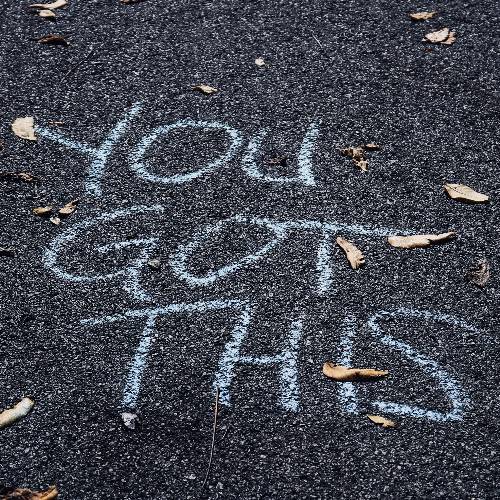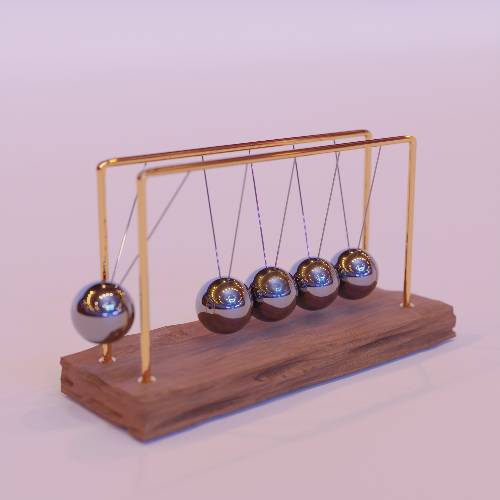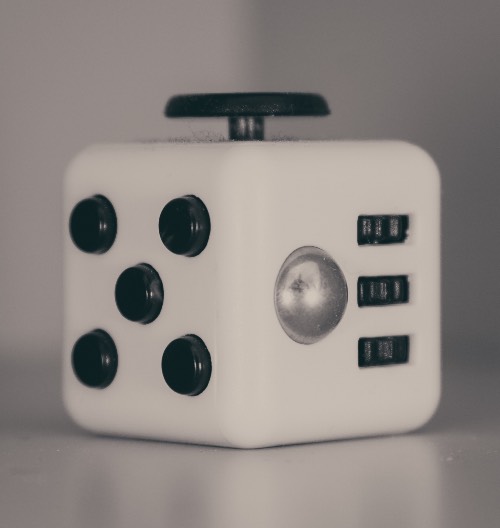Chin Priscilla
Imagine staring at a mountain of laundry, hands hovering but never quite picking up the first shirt. Or sitting down to write that critical report, only to find your mind swirling in a fog of possibilities, unable to string a single sentence together. This, in essence, is what ADHD paralysis feels like.
It’s more than just procrastination or feeling lazy. It’s a mental and emotional roadblock that slams shut when confronted with tasks, even those you desperately want to accomplish. The brain becomes overwhelmed, overloaded by information or options, causing a debilitating freeze. Panic and self-doubt creep in, whispering fears of failure or inadequacy, effectively gluing you to your spot.
This paralysis can manifest in different ways. Sometimes, it’s the overwhelming weight of a project, the fear of starting and messing up, that keeps you paralyzed in inaction. Other times, it’s the endless loop of choice paralysis, where choosing from countless possibilities becomes so daunting that no choice seems good enough. And then there’s the mental fog, where the brain simply shuts down, refusing to engage with any task at all.
ADHD paralysis isn’t your fault. It’s a symptom, a manifestation of the executive function challenges common in ADD and ADHD. Just like a physical obstacle might trip you up, these mental roadblocks can significantly hinder your progress.
What is ADHD paralysis?
ADHD paralysis refers to the phenomenon where people with ADHD struggle with getting started on tasks or making decisions, often due to being overwhelmed by too many options or not knowing where to begin. It transcends simple procrastination and manifests as a mental and emotional shutdown hindering the initiation or completion of tasks, even those deemed important or desirable.

Symptoms of ADHD paralysis
Indecisiveness
Even simple choices, like what to wear or what to eat, can feel overwhelming. For example, when you’re presented with multiple options for a task, you find it hard to settle on one.
Indecisiveness is a common symptom of ADHD paralysis. When facing a task or decision, the ADHD brain struggles to prioritize and focus, becoming overwhelmed by options. You may find yourself trapped in endless cycles of analyzing without moving forward. You may continually second-guess yourself, change your mind back and forth, or avoid committing to any choice out of fear of failure or imperfection.
This chronic indecisiveness and choice paralysis stems from ADHD-related difficulties with executive function, which handles organization, planning, and decision-making. The paralysis of not knowing where to start or what option to pick can be incredibly frustrating and make it very difficult for someone with ADHD to take action. Indecisiveness and analysis paralysis go hand-in-hand, exacerbating the hurdles of getting started on tasks.

Difficulty Starting Tasks
Difficulty starting tasks is a hallmark of ADHD paralysis. The ADHD brain struggles with prioritization, time-blindness, and task initiation. You want to begin a task but cannot seem to take the first step or transition into doing the work. You may sit staring at the task, engaged in avoidance behaviors, continuously telling yourself that you will start in just a few minutes. Or you may jump between tasks, failing to gain momentum on any one thing. Procrastination often occurs along with this paralysis, as the passage of time becomes blurred. The person realizes they need to start but cannot initiate the behavior needed to begin. Executive dysfunction makes it extremely hard to kickstart productivity and self-regulation. The intention and desire to start is present, but you remain stuck in an idle state, unable to shift gears into active work mode.
Inability to prioritize
The ADHD mind struggles with determining importance and ordering tasks. Everything seems equally urgent or interesting, making it difficult to decide what should come first. You may find yourself jumping randomly between tasks without a systematic plan. Or you obsessively analyze priorities without actually determining a hierarchical order. Lacking a clear sense of ranking significance means acting on any one task feels impossible with so many competing options. Every potential task calls for your attention, and focus gets fractured between distractions. Without the executive function skills to step back and identify proper priorities, you are paralyzed by indecision and overwhelm. Choosing where to start becomes arbitrary without the ability to recognize what is most vital based on goals, deadlines, and logical sequencing. Thus, prioritization paralysis further hampers productivity.

Brain fog
Cognitive functions like working memory, focus, and alertness are impaired. People with ADHD might experience sluggish thought processes and an inability to think clearly. Their mind feels full of mental clutter, making it extraordinarily difficult to engage with a task requiring concentration. Trying to grasp onto any one thought feels like grasping at smoke, with ideas slipping away before they fully form. The intense mental haziness means starting or making decisions is next to impossible. People describe it as having head full of cotton, making it hard to power through the fog to initiate and sustain attention. Brain fog may also encompass feelings of detachment and mental numbness. With cognition muted under thick haze, paralysis sets in.
Exhaustion
The constant effort to initiate tasks and make decisions in the face of executive dysfunction requires huge mental energy. The strain of both fighting paralysis and feeling gripped by it leads to depletion of cognitive resources. Fatigue sets in along with the desire to avoid further frustrating efforts. This tiredness feeds into the inertia, making it even more challenging to find the activation energy to start a task. People who struggle with ADHD may optimistically wait for a burst of motivation and clarity that never arrives. Thus, as exhaustion accumulates, engaging with responsibilities seems increasingly impossible, even as pressure builds. The longer the paralysis persists, the more drained the mind and body feel.

Poor time management
Those with ADHD struggle with perceiving time, meeting deadlines, and allotting proper time to tasks. They may underestimate how long something will take or lose track of time once engaged. Poor time management makes starting tasks more stressful, as the steps required are unclear. It also leads to rushing to meet deadlines at the last minute. Learning to schedule and chunk time is essential to overcoming the paralysis. When tasks are broken into steps with timelines, inertia can be eased. However, without these skills, poor time management sustains paralysis and procrastination cycles.
Low self-esteem
The continuous cycle of being unable to accomplish goals and basic tasks results in feelings of inadequacy and self-judgment. People who struggle with ADD/ADHD begin to view themselves as lazy, dumb, or failures. Their sense of self-worth sinks lower as they watch peers thrive while they remain paralyzed. Harsh inner critics emerge telling them they are broken and useless. Social isolation and irritability further degrade self-image. Inability to perform according to their potential damages confidence and esteem.
Do I have ADHD paralysis or am I just lazy?
what is adhd paralysis
Ever felt paralyzed before a task, staring at it like a mountain unclimbable? The urge to do it simmers, but your brain won’t budge. Frustration builds, whispers of “laziness” echoing in your mind. Before that label sticks, let’s explore the difference between ADHD paralysis versus plain old laziness.
ADHD paralysis is a term used to describe the experience of feeling overwhelmed and immobilized when facing multiple tasks or stressful situations. It is not a medical diagnosis, but a common challenge for individuals with ADHD. Symptoms of ADHD paralysis include brain fog, exhaustion, limited functionality due to executive dysfunction, irritability, social isolation, and poor time management.
On the other hand, laziness is not a medical or psychological condition, but rather a lack of motivation. Laziness refers to a state of unwillingness to exert effort or engage in any form of activity, regardless of its importance or potential benefits.
A note about “laziness”: Before we move on to talk about the differences, it’s crucial to acknowledge that perceived laziness, even if it’s not ADHD paralysis, can sometimes be a symptom of other issues, such as depression, anxiety, burnout, or even physical conditions affecting energy levels. Addressing these underlying issues can be far more helpful than simply labeling someone as lazy.
Internal Struggle with Decision-Making
When facing ADHD paralysis, you find yourself caught in an internal battle when making choices. There’s a genuine effort to decide, but you feel overwhelmed by the options, leading to analysis paralysis. On the other hand, when dealing with laziness, decision-making might not be the primary issue; there’s often a lack of motivation or effort to engage in tasks without much deliberation.

Inability to Decide Despite Effort
In ADHD paralysis, you put effort into weighing choices but struggle to reach a decision. This struggle persists despite your sincere attempts to resolve it. Laziness, however, involves avoidance or procrastination without necessarily engaging in the decision-making process.
Emotional Distress and Anxiety:
Choice paralysis associated with ADHD often leads to emotional distress, anxiety, and frustration. You feel ‘stuck’ and experience emotional turmoil due to the difficulty in making choices. Laziness, on the other hand, might cause stress closer to deadlines due to procrastination but generally lacks the emotional distress associated with the inability to decide.
Consistency Across Tasks
ADHD paralysis affects various aspects of your life consistently. Whether it’s simple choices or significant decisions, you face similar challenges in making up your mind. Laziness tends to be more selective, impacting specific tasks or areas where there’s a lack of interest or motivation.
Types of ADHD paralysis
ADHD is a complex condition, and people often experience a blend or varying degrees of these types of paralysis. The experience of ADHD paralysis isn’t rigidly confined to distinct categories but rather exists on a spectrum, with individuals experiencing a mix of mental, task, and choice paralysis in different situations and at different intensities.
The interplay between these types of paralysis can fluctuate over time and across contexts. For instance, someone might predominantly struggle with mental paralysis when tackling complex projects at work or school. Simultaneously, they might also face task paralysis when initiating daily activities or choice paralysis when making decisions in personal relationships.
Mental Paralysis in ADHD

Mental paralysis within the realm of ADHD manifests as a cognitive struggle that impedes decision-making processes. This type of paralysis involves a profound difficulty in organizing thoughts, prioritizing information, and navigating through mental tasks, leading to a feeling of being mentally ‘stuck.’
In ADHD, mental paralysis often arises due to challenges in executive functioning, where people struggle with cognitive processes such as planning, organizing, and shifting attention. This can cause mental gridlock when attempting to process complex information or multitask. For instance, when faced with a complex project, you might find it challenging to break it down into manageable steps, causing mental overload and hindering progress.
Mental paralysis can significantly impact academic performance, work productivity, and daily functioning. Tasks that require mental flexibility and problem-solving skills become overwhelming, leading to delays and frustration. This type of paralysis may also affect interpersonal interactions, as people might struggle to process information in social settings or during conversations.
Task Paralysis in ADHD
Task paralysis in ADHD refers to difficulties in initiating or completing specific tasks due to a sense of being ‘stuck’ or unable to take the first step. This type of paralysis revolves around the physical aspect of executing tasks rather than the decision-making process itself.
Individuals with ADHD may face task paralysis due to challenges in initiating action, transitioning between tasks, or maintaining focus on a single task. For example, starting a project, organizing a workspace, or even engaging in routine activities might pose significant challenges, leading to delays and incomplete tasks.
Task paralysis greatly impacts productivity and time management. Unfinished tasks accumulate, causing a backlog and potentially affecting performance in various domains, including education, work, and personal responsibilities. This type of paralysis may also lead to feelings of frustration and a sense of underachievement, impacting self-esteem and confidence.
Choice Paralysis in ADHD

Choice paralysis in ADHD refers to the overwhelming difficulty individuals experience when faced with making decisions. It involves getting ‘stuck’ in the decision-making process, whether it’s choosing between options, evaluating possibilities, or committing to a course of action.
This type of paralysis often stems from the challenges individuals with ADHD face in evaluating options, processing information, and coping with uncertainty. For instance, deciding between multiple options, whether it’s choosing a career path or making minor daily choices, can lead to prolonged periods of indecision and anxiety.
Choice paralysis significantly impacts various aspects of life, including personal relationships, academic performance, and work-related decisions. Difficulty in making choices may lead to missed opportunities, delays in progress, and heightened stress levels due to the constant mental burden of unresolved decisions.
How can I break out of ADHD paralysis?
Tip 1: Acknowledge, with self-compassion, that you are feeling immobilized
It’s understandable to feel frustrated by ADHD paralysis, but it is not your fault. Rather than judging yourself harshly, remember you’re still in the process of figuring out what strategies work best for your unique brain wiring and needs. You can play around with different tools, adjust your environment, take mental breaks, and see what helps spark motivation and focus. If one method doesn’t work, you can try another with an open, curious mindset, and with the same patience you would show a child who is still learning how to manage their ADHD.
Your brain is wired differently, and ADHD paralysis is a common challenge many with ADD and ADHD face. The executive functioning differences in ADD and ADHD make starting tasks more difficult, but that doesn’t mean you are lazy or incapable.
Rather than judging yourself, accept ADHD paralysis as a neurological reality and be compassionate. You did not choose to have ADHD, but every day you choose to persist despite the obstacles it brings. This journey does not have to be a bitter battle against your brain, but a process of deepening self-understanding and finding ADHD-friendly workflows. Experiment with strategies and adjust as needed. Each attempt can be an opportunity to build your self-knowledge about what does and doesn’t work for your brain. Keep trying new tactics to support your brain, sensory, energy, and body’s needs.

Tip 2: Strategically schedule tasks during periods where your energy or motivation levels are higher
One trick to work around ADHD paralysis is to schedule tasks during peak motivation and energy levels. These optimal times are different fom person to person. Depending on the way your brain, body, and schedule works, these peak times can include daytime, post-exercise, and sometimes nighttime.
Daytime, especially after a good night’s sleep, often presents a window of increased focus and mental clarity for many people. Following physical exercise, there’s a notable surge in energy and alertness, making it an opportune time to tackle tasks. Additionally, some people with ADHD experience heightened concentration during nighttime, finding it conducive for completing tasks when distractions diminish.
For many people, energy levels can fluctuate also based on their nutritional state. Being hungry or having recently eaten can significantly impact focus and productivity. Try scheduling tasks when you’re adequately nourished, not overstuffed, and not experiencing hunger pangs. This can also optimize energy levels and aid in combating ADHD-related challenges.
Aligning tasks with these periods of optimal energy can enhance productivity and focus.
Tip 3: Cultivate a mindset where you celebrate the first step and every step taken, not just completed tasks
Shift your focus from solely valuing the finished project or task to appreciating the journey of progress. By acknowledging and celebrating the act of starting, you’re recognizing the effort it took for your ADD/ADHD brain to begin. Each step, regardless of size, contributes to the overall progress. Embracing this mindset allows you to appreciate incremental achievements, which are often overlooked but equally important in overcoming challenges.
Value progress over perfection and acknowledge the effort it took to begin and continue moving forward. Offer yourself verbal affirmations or small rewards for every step where you had to overcome a mental and emotional hurdle.

Tip 4: Start with quick, high-reward tasks that can provide momentum to break through the inertia
When paralyzed by ADHD, opt for tasks that demand less time and mental energy but offer high rewards. Accomplishing these tasks can provide momentum to break through the inertia. Make a list of responsibilities and rank them by effort and impact. Prioritize 1-3 low-energy but high-reward tasks to tackle first each day.
Choose tasks with visible outcomes so that even small progress feels satisfying. Reward yourself after high-impact tiny tasks to reinforce the behavior. Small wins prime your mind for activation just like stretching warms up muscles before exercise. The sense of accomplishment and vitality from quick duties can give you the boost needed to break through stagnation.
Tip 5: Try the 5-Minute Challenge
The 5-Minute Challenge involves committing to focusing on a task or choice for a brief duration of just five minutes. This technique acknowledges that starting is often the most challenging aspect, and the rule aims to break the initial inertia. Make a pact with yourself – for those five minutes, fully commit to the task or decision at hand. Put away distractions, silence the inner critic, and dive in.
Start Anywhere: Don’t get bogged down in perfection. Dive in at any point! Write the first sentence, brainstorm a single idea, take one step towards organizing, make a mental list of pros and cons for your decision. Just start.
Embrace the Momentum: Often, once you start, the inertia breaks. Five minutes can turn into ten, then fifteen, and before you know it, you’ve made significant progress or reached a clearer decision.
No Guilt if You Stop After 5 Minutes: Remember, five minutes is your minimum, not your maximum. If after five minutes, you genuinely feel like changing gears, do it without guilt. The 5-Minute Rule is a gentle nudge, a way to trick your brain into action. It doesn’t force you to climb the entire mountain, just take the first step.
This strategy leverages the concept that getting started is the hardest hurdle. By setting a short time limit, it lessens the pressure and mental barriers associated with the task. It encourages a shift in focus from the overwhelming scale of the entire task to the achievable goal of initiating action within a brief timeframe.

Tip 6: Batch low-energy or easier tasks together
When you group these tasks together and systematically cross them off, it triggers a consistent stream of small achievements. Each completed task within the batch stimulates a minor release of dopamine, contributing to a series of small but satisfying rewards. These continuous bursts of positive reinforcement can help regulate dopamine levels in the brain. It not only saves time but also capitalizes on the psychological impact of steadily reducing your task list, fostering a sense of accomplishment and momentum.
Tip 7: Alternate between necessary tasks and tasks that are interesting, spark curiosity, or offer a small amount of enjoyment.
Go through each item in your to do list and highlight those that pique your curiosity or have some engaging element. These tasks might not be fully enjoyable, but they possess qualities that keep you interested or curious enough to dive in.
Here are some examples. You might find researching a new topic interesting, even if it’s not your favorite subject. Exploring new information can spark curiosity. Or, sometimes, even routine tasks might have components that interest you. For instance, within a routine task like organizing, perhaps creating a new system or reorganizing an area may be engaging.
Once you’ve made a list of the more engaging tasks, alternate between working on these tasks and ones that are more tedious. By including tasks that stimulate a level of interest or curiosity, you’re capitalizing on their ability to engage your attention and motivate action. This approach maintains a balance between necessary responsibilities and tasks that stimulate your interest and creates an engaging workflow that helps in overcoming the challenges of ADHD paralysis.

Tip 8: Use a decision making framework to decide what to do when you feel paralyzed
Create an effective decision-making process to help with prioritizing and analysis paralysis. The process can help evaluate options based on weighted factors, rather than making impulsive judgements. This framework should prompt consideration of the importance, urgency, and long-term impact of each decision.
Some common factors to consider include:
Importance: How crucial is the decision in the context of your goals or values?
Urgency: Is there a deadline or time constraint associated with the decision?
Resources: Consider the availability of resources (time, money, support) required for each option. Do you have the time, mental and emotional capacity to work on this task right now? If you are low on reserves, which one requires the least energy?
Risk Tolerance: Evaluate your comfort level with risk or uncertainty associated with each choice.
Potential Gains: How satisfying or rewarding would completing the task be to you right now?
If you still don’t know what to do after considering these factors, you can assign a weight to each factor on a 1-5 or 1-10 scale. Higher weights indicate more significance.
With factors weighted, make a table listing each option on the left and the weighted factors across the top. Score each choice on how well it meets the defined factors. Higher scores show which options fulfill the most weighted criteria. Add up the scores to get a total for each choice. Finally, compare the total scores to make a data-driven decision.
Tip 9: Break tasks down into manageable steps (here's how to do it)

Chunking down tasks is a great way to make them more manageable, especially for people managing ADHD. Here’s a detailed guide on the different ways to chunk tasks realistically.
Time-Based Chunking:
- Divide tasks based on time blocks (e.g., work on a task for 10 minutes,)
Deadline-Based Chunking:
- Prioritize tasks based on deadlines, breaking them down into smaller portions based on the urgency and deadline
Energy-Based Chunking:
- Organize tasks based on your energy levels throughout the day, tackling more challenging or mentally demanding tasks during peak energy periods.
- Energy-based chunking helps you work smarter, not harder, by aligning your effort with your natural rhythms.
- During your low-energy periods, schedule simpler tasks that require less mental exertion.
- Listen to your body and mind. Take breaks when needed, and don’t be afraid to prioritize rest over productivity when your energy is low.
- Experiment and find what works best for you. Your peak energy periods and task types might differ from others, so embrace your unique rhythm and tailor your schedule accordingly.
Size-Based Chunking:
- Divide tasks based on their size or complexity, breaking larger tasks into smaller, more digestible components. Eg: reading 3 pages of a book versus reading a whole chapter
Location-Based Chunking:
- Divide tasks based on where they can be accomplished, such as at home, in areas of the home (for example, instead of tackling the daunting task of mopping the whole apartment, you can group all the bathroom cleaning tasks together), in the office, on your phone versus computer, in different sets of windows/tabs, or while commuting.
Sequential Task Organization:
- Instead of viewing tasks as a jumbled mass, arrange them in a logical sequence, where each task builds upon the completion of the previous one. This creates a clear path to follow, turning a daunting mountain into a series of manageable stepping stones.
- In this method, you can’t jump ahead to a later task without first completing the necessary prerequisites. This ensures focus and prevents skipping crucial steps.
- Using this method, you can also rule out all the tasks that need to be tackled now versus later. For example, you can’t send invitations before deciding on a date, time, and location. Or, you can’t develop marketing materials before defining your target audience and value proposition.
Selecting the most suitable chunking method depends on the nature of the task, personal preferences, and how effectively it helps in managing and completing the tasks. Experimenting with different chunking techniques can help identify the most effective approach for specific tasks or situations.
Tip 10: Hack your environment
If you struggle with ADHD paralysis, your surroundings could be either helping or hurting your productivity. The physical space we occupy has a huge impact on our mindset and ability to take action. Below are tips for hacking your environment to spark momentum when you feel stuck:
Tailor Your Environment to Your Brain
Create a space that sparks joy and focus. Declutter your workspace completely – clear off surfaces and remove any visual clutter. Bring in inspiring elements like motivational quotes, cool office accessories, plants, or pictures of loved ones. Personalize your surroundings with your favorite colors, lighting, and textures to make it feel uniquely yours. A happy environment tricks your brain into feeling more receptive to being active and knocking out tasks.
Find Your Focus Zone
Ditch the digital distractions for a while! Create a workspace totally free from clutter, notifications, and screens. Turn phone alerts off, close distracting computer windows, and eliminate anything else that pulls your attention. For extra focus power, consider noise-canceling headphones or white noise machines to block out auditory disruptions. Experiment with different work environments – desk, couch, floor, coffee shop, library – and find what uniquely sparks your concentration.

Set Up for Your Sensory Needs
Tailor your workspace lighting, sounds, fidget tools, and more to suit your sensory needs and preferences. Low lighting and minimal noise may calm some brains, while others need brightness and background audio. Provide fidget toys for restless hands. Crank up motivational music or scent the air with energizing essential oils. Create the sensory experience that makes your brain feel most alive.
Partner Up
Find an accountability partner, online community, or productivity buddy to share the quest to defeat ADHD paralysis. Discuss goals, motivate each other, troubleshoot obstacles, and celebrate small wins together. Knowing someone else is journeying alongside you can make the path forward feel less intimidating.
Hacking your environment to match your needs provides a landscape where your brain can thrive. Surround yourself with conditions that spark joy, ease, and focus.
If you're chronically struggling with ADHD paralysis..
Schedule a consultation with our vetted therapists to get support.
- Limited weekday evenings available right now for DC, NY & NJ
- FREE 15 minute consultation
- In-depth therapy that addresses more than just symptoms
- Trained in Evidence-Based Practices
If you're feeling overwhelmed by this list and don't know where to start..
I know it can feel overwhelming to see a long list of strategies to deal with ADHD paralysis. Please don’t feel like you need to implement them all at once! Take a deep breath and remember that progress happens in small steps. Start by picking just one technique that really appeals to you right now; pick one that sparks your curiosity or seems interesting to try. Build it into your routine first to try for a week, and evaluate its effectiveness before layering on more tactics down the road.
It’s also completely fine to take a break from the list altogether and come back to it later when you have more mental bandwidth. There’s no rush – this information will still be here when you’re ready to take the first step.

It’s easy to get caught up in feeling like flawless plans and decisions are needed before taking any action. But the truth is that progress happens through imperfect steps forward. Accepting that not all choices need to be perfect can alleviate the pressure associated with choice paralysis. Tiny gains are still gains, even if execution is not elegant or thorough. Any step forward builds momentum, and momentum is the key to breaking through paralysis.
There is no ideal strategy – just continued effort through imperfect action – to create forward motion. Progress over precision is what will carry someone step-by-step toward their goals. You get to curate exactly the ideal set of tools for your brain’s unique challenges and strengths.
Treatment for ADHD Paralysis
Seeking treatment for ADHD and ADD through medication management and therapy can have significant benefits for people dealing with the emotional and self-esteem ramifications of the condition. Medication, such as stimulants or non-stimulants, can help improve attention, reduce impulsivity, and manage other core symptoms of ADD and ADHD.
However, it’s important to note that medication may not address all aspects of the condition, such as disorganization, poor time management, and forgetfulness. This is where therapy specialize for people struggling with ADD and ADHD can help. Therapy can help you work through the emotional and self-esteem challenges associated with ADHD. Therapy can assist in managing stress, anger, impulsivity, and can also provide valuable tools for improving time management, organizational skills, and overall functioning. Additionally, therapy can address co-occurring conditions, such as anxiety, depression, and substance use disorders, which often accompany ADHD.
By combining medication management and therapy, people with ADHD can experience improved functioning, better quality of life, and enhanced coping abilities in their daily lives.
Want more info? You may find these resources helpful.
A meta-analysis of decision-making and attention in adults with ADHD
“I’m So Indecisive Now!” On ADHD and Analysis Paralysis in the Pandemic
ABOUT THE AUTHOR
Chin Priscilla
Priscilla is a therapist, psychoanalyst, and the practice owner of Imagine Emotional Wellness, a culturally responsive online therapy practice in New York, New Jersey, and Washington DC.
Prioritize your mental health and self-care from the comfort of your home.
Schedule a phone consult here. We’ll chat about any questions you might have, and it’ll be an opportunity for us to learn more about you and what you’re going through.









